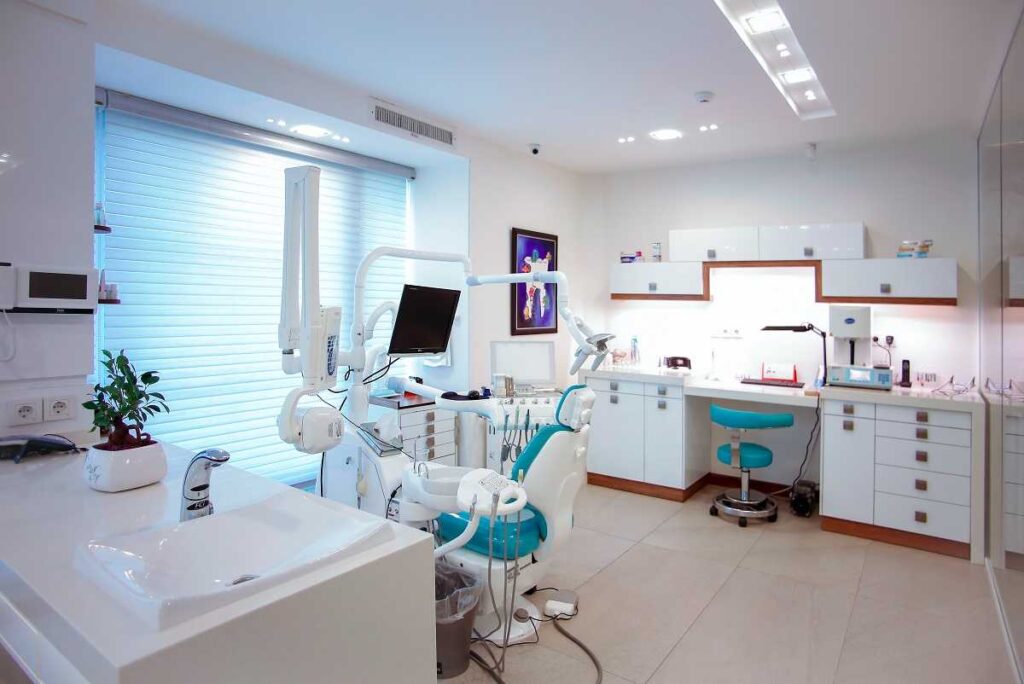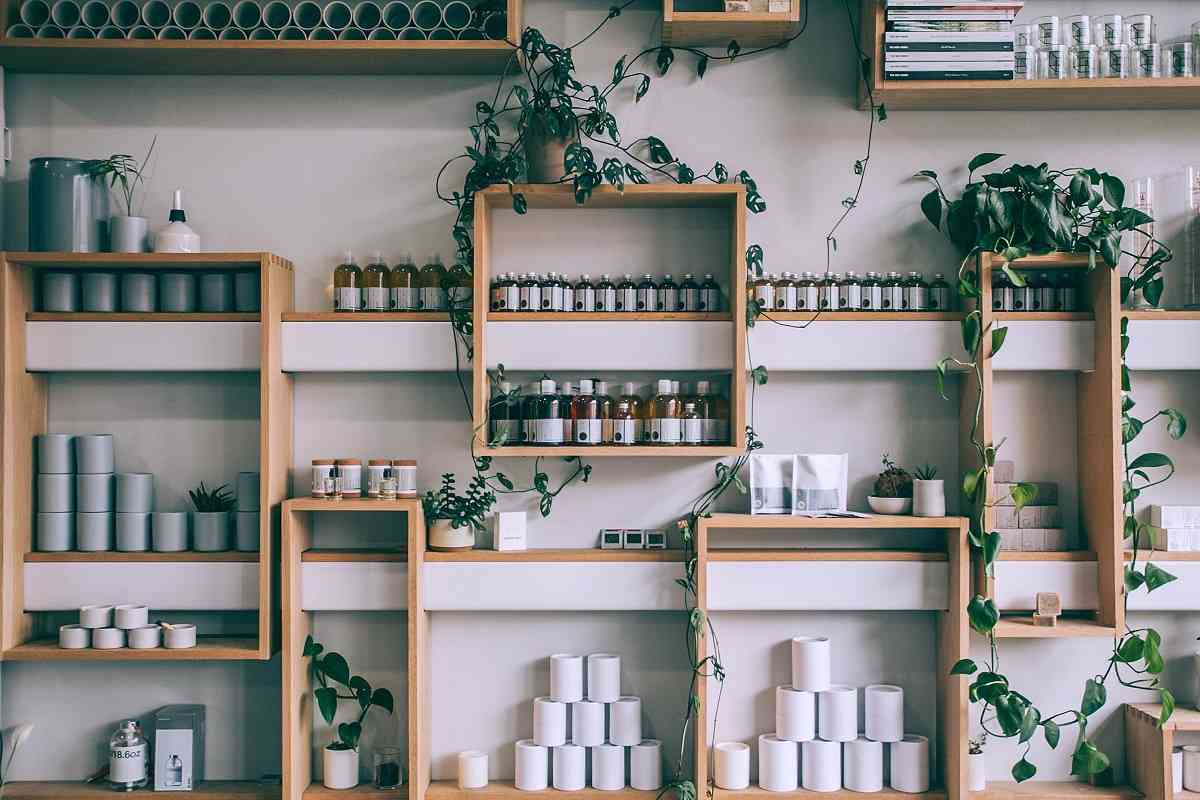In the competitive world of aesthetic clinics, the first impression is often the lasting one. The design of your clinic, from the reception area to the treatment rooms, plays a crucial role in shaping the client’s perception. In this article, we delve deep into the realm of clinic design, exploring the nuances of aesthetic clinic interior design that go beyond mere aesthetics. Join us on a journey where every room, every piece of furniture, and every touch contributes to creating an environment that not only reflects the brand but also ensures a positive and comforting experience for the clientele.

How to Design a Small Aesthetic Clinic Interior? A Step-by-Step Guide.
Designing a small aesthetic clinic interior requires a thoughtful approach to maximize space while creating an inviting and functional environment. Follow this step-by-step guide to transform your compact space into a stylish and efficient aesthetic haven.
- How to Assess Your Space?
Begin by taking detailed measurements of the clinic space. Identify any architectural features, such as windows or alcoves, that can be used to your advantage. Understanding the layout will help you make informed design decisions.
- How to Define Your Aesthetic?
Clarify the aesthetic theme you want for your clinic. Whether it’s modern, minimalist, or cozy, having a defined aesthetic will guide your design choices and create a cohesive look.
- How to Optimize Layout for Efficiency?
Plan the layout to maximize the use of space. Consider the flow of clients and practitioners and ensure that each area serves a specific purpose. Utilize multi-functional furniture to save space.
Table of contents
- 1. The Power of Design: Crafting a Lasting First Impression
- 2. From Concept to Reality: Navigating the Clinic Interior Design Process
- 3. The Reception Area: Crafting an Inviting Welcome
- 4. Treatment Rooms: Maximizing Comfort and Functionality
- 5. Aesthetic Clinic Branding: Beyond Logos and Colors
- 6. Lighting and Ambiance: Creating the Right Mood
- 7. Functional Spaces: Ensuring Every Inch Counts
- 8. Testimonials and Credibility: Designing with Trust in Mind
- 9. Small Aesthetics: Attention to Detail Matters
- 10. Comfort is Key: Designing for Clientele Satisfaction
- Conclusion: Crafting Your Unique Clinic Identity
- Frequently Asked Questions (FAQs)
- Related Post
| Topic | Key Points |
|---|---|
| 1. The Power of Design | – Design as the brand ambassador |
| – Aesthetic clinic success factors | |
| – Fundamental aspects beyond surface design | |
| 2. From Concept to Reality | – Meticulous design process |
| – Key considerations for success in interior design projects | |
| – Unraveling steps from concept to a functional clinic space | |
| 3. The Reception Area | – Significance as the first touchpoint |
| – Designing a welcoming and reassuring reception area | |
| – Importance of lighting in creating the right ambiance | |
| 4. Treatment Rooms | – Heart of any aesthetic clinic |
| – Balancing aesthetics with functionality | |
| – Role of furniture in ensuring comfort for clients and practitioners | |
| 5. Aesthetic Clinic Branding | – Brand as an immersive experience |
| – Infusing brand identity into clinic design | |
| – Conveying brand essence through color scheme and layout | |
| 6. Lighting and Ambiance | – Lighting’s role in setting the mood and tone |
| – Creating a luxurious and inviting ambiance | |
| – Importance of natural light and carefully placed fixtures |

1. The Power of Design: Crafting a Lasting First Impression
The moment a client steps into your clinic, the design becomes the ambassador of your brand. What makes an aesthetic clinic design successful? How can you ensure that every element contributes to a positive first impression? Let’s explore the fundamental aspects of clinic design that go beyond the surface.
2. From Concept to Reality: Navigating the Clinic Interior Design Process
Designing an aesthetic clinic involves a meticulous process that goes beyond choosing colors and furniture. How does the design process unfold? What are the key considerations that make an interior design project successful? Let’s unravel the steps that turn a conceptual idea into a tangible and functional clinic space.
3. The Reception Area: Crafting an Inviting Welcome
The reception area is more than just a place to sign in. It’s the first touchpoint between your clinic and the client. How can you design a reception area that invites and reassures? What role does lighting play in creating the right ambiance? Let’s explore design ideas that turn the reception area into a warm and welcoming introduction to your clinic.
4. Treatment Rooms: Maximizing Comfort and Functionality
The heart of any aesthetic clinic lies in its treatment rooms. How can you ensure these spaces are not only aesthetically pleasing but also functional? What role does furniture play in creating an environment where both the client and the practitioner feel comfortable? Join us in exploring the design elements that maximize the effectiveness of your treatment rooms.
5. Aesthetic Clinic Branding: Beyond Logos and Colors
Your clinic’s brand is more than just a logo; it’s an experience. How can you infuse your brand identity into the very design of your clinic? From the color scheme to the layout, every element should convey the essence of your brand. Let’s delve into the world of branding through clinic design.
6. Lighting and Ambiance: Creating the Right Mood
Lighting is more than just illumination; it sets the mood and tone of your clinic. How can you use lighting to create a luxurious and inviting ambiance? Whether it’s natural light or carefully placed fixtures, lighting plays a pivotal role in the overall design. Let’s explore the art of illuminating your clinic space.
7. Functional Spaces: Ensuring Every Inch Counts
In a clinic, functionality is key. How can you ensure that every space, from the waiting room to the treatment areas, is designed for maximum efficiency? What role does furniture play in creating functional yet aesthetically pleasing spaces? Let’s dissect the importance of functionality in clinic design.
8. Testimonials and Credibility: Designing with Trust in Mind
Testimonials and credibility are the backbone of any successful aesthetic clinic. How can your design contribute to building trust among your clients? From the arrangement of certificates to the layout of your surgical rooms, every design choice can either enhance or detract from your clinic’s credibility. Let’s explore the nuances of designing for trust.
9. Small Aesthetics: Attention to Detail Matters
Sometimes, it’s the smallest details that make the biggest impact. How can you incorporate small aesthetic touches that leave a lasting impression? Whether it’s the choice of accents or the placement of mirrors, attention to detail can elevate your clinic’s design to new heights. Join us in exploring the power of small aesthetics.
10. Comfort is Key: Designing for Clientele Satisfaction
Above all, an aesthetic clinic should be a space where clients feel comfortable and at ease. How can you design an environment that not only meets but exceeds the expectations of your clientele? From the waiting room to the treatment areas, let’s explore the elements that make comfort the cornerstone of your clinic’s design.

Conclusion: Crafting Your Unique Clinic Identity
In the realm of aesthetic clinic interior design, every element contributes to the narrative of your brand. From the initial design concept to the smallest aesthetic details, each decision shapes the client’s experience. Remember, it’s not just about creating a beautiful space; it’s about crafting an environment that reflects your brand, ensures functionality, and, most importantly, leaves a lasting positive impression on your clientele.
Key Takeaways: What to Remember
- Clinic design is a holistic process that involves careful consideration of every element, from the reception area to treatment rooms.
- The design process is not just about aesthetics; it’s about creating a functional and efficient clinic space.
- The reception area sets the tone for the entire clinic, and lighting plays a crucial role in creating the right ambiance.
- Treatment rooms should balance aesthetics with functionality, ensuring both client and practitioner comfort.
- Branding should be seamlessly integrated into the clinic’s design, reflecting the essence of the clinic’s identity.
- Lighting is a powerful tool in creating a luxurious and inviting ambiance in your clinic.
- Functionality is key in clinic design, ensuring that every space is optimized for efficiency.
- Testimonials and credibility should be incorporated into the design to build trust among clients.
- Small aesthetic touches and attention to detail can make a significant impact on the overall design.
- Comfort should be prioritized, making it a key element in designing for clientele satisfaction.
Frequently Asked Questions (FAQs)
Clinic interior design is the process of planning and creating a visually appealing and functional environment within a medical or aesthetic clinic. It is crucial for aesthetic clinics as it sets the tone for the overall client experience, contributing to a positive first impression.
Clinic design is specific to healthcare and aesthetic settings, considering factors like patient comfort, functionality of treatment rooms, and compliance with healthcare regulations. It focuses on creating a space that is both aesthetically pleasing and conducive to medical practices.
Aesthetic clinic interior design should consider factors such as the reception area, treatment room layout, lighting, furniture, and overall branding. These elements collectively contribute to creating a cohesive and inviting environment.
Lighting plays a crucial role in creating the right ambiance in an aesthetic clinic. Using a combination of natural light, strategically placed fixtures, and a thoughtful color scheme can enhance the overall atmosphere and contribute to a luxurious and inviting feel.
The first impression sets the tone for the entire client experience. A positive first impression creates trust, comfort, and a sense of professionalism. Clinic interior design plays a significant role in shaping this initial encounter.
